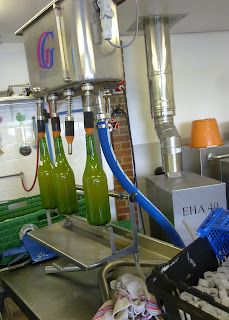The schedule for Saturday was to get to Warwick. However, we did some more detailed calculations on Friday evening and realised that this would leave the next two days too hard to achieve. So we decided to start the Hatton Flight on Saturday. This meant forgoing the Warwick restaurants – but we remembered The Waterman, near the top of the Hatton flight! So we set of early for a day of locks.
Through Leamington, we shared the cut with a Sprint Canoe. I’d never seen one of these before but apparently it’s in the Olympics. It looks very hard work and uncomfortable. This canoeist was obviously in training.
After 8 locks, we turned North and started the Hatton flight. Although not the longest flight on the English canals (Tardebigge has that honour – 30 locks in 2¼ miles) the 21 locks at Hatton are quite a challenge. Known as the ‘Stairway to Heaven’ they are not quite in a straight line so you can’t see all of them at once. Looking back, there’s a wonderful view of the tower of St Mary’s, Warwick, but we didn’t look back too often!
We were lucky with the locks as virtually all were set for us – they were nearly empty so we didn’t have to spend time emptying them before opening the bottom gates. The flight of 21 locks we completed in just over 3 hours including a 20 minute break for tea.
Day 2: 9.6 miles, 29 locks
Click on the map below to see a larger version with the GPS track overlaid:
Through Leamington, we shared the cut with a Sprint Canoe. I’d never seen one of these before but apparently it’s in the Olympics. It looks very hard work and uncomfortable. This canoeist was obviously in training.
After 8 locks, we turned North and started the Hatton flight. Although not the longest flight on the English canals (Tardebigge has that honour – 30 locks in 2¼ miles) the 21 locks at Hatton are quite a challenge. Known as the ‘Stairway to Heaven’ they are not quite in a straight line so you can’t see all of them at once. Looking back, there’s a wonderful view of the tower of St Mary’s, Warwick, but we didn’t look back too often!
We were lucky with the locks as virtually all were set for us – they were nearly empty so we didn’t have to spend time emptying them before opening the bottom gates. The flight of 21 locks we completed in just over 3 hours including a 20 minute break for tea.
Day 2: 9.6 miles, 29 locks
Click on the map below to see a larger version with the GPS track overlaid:













































